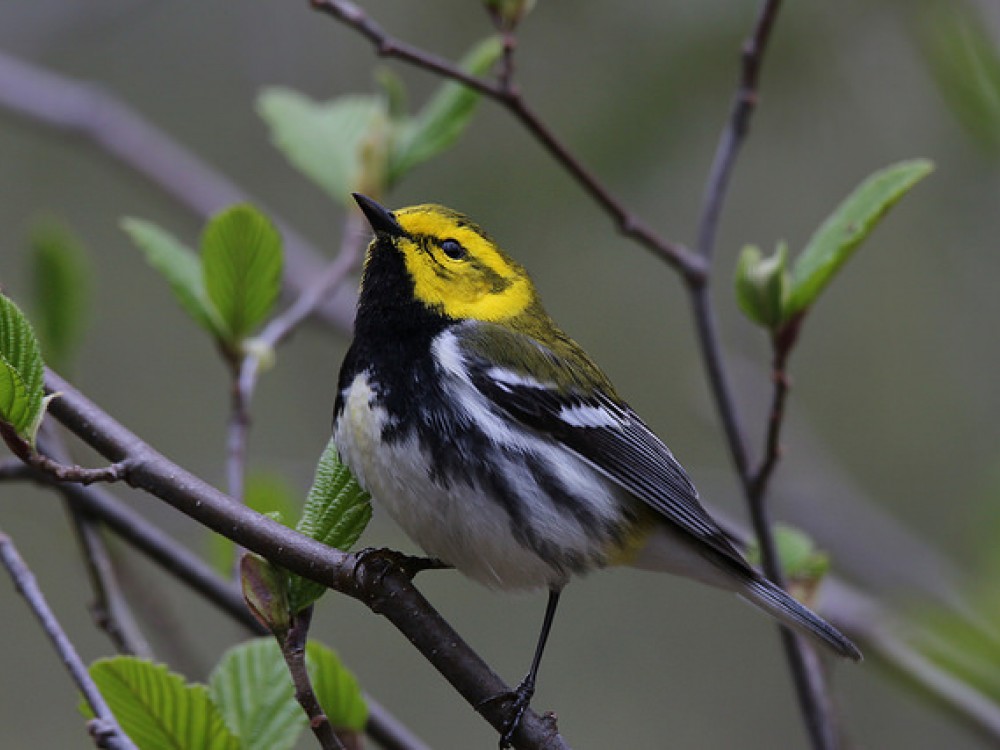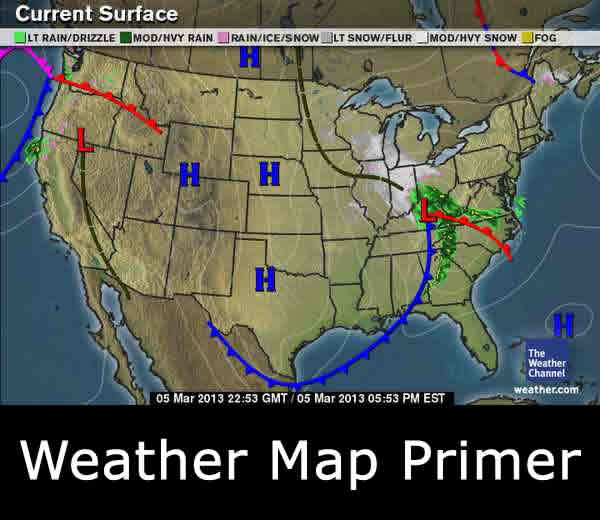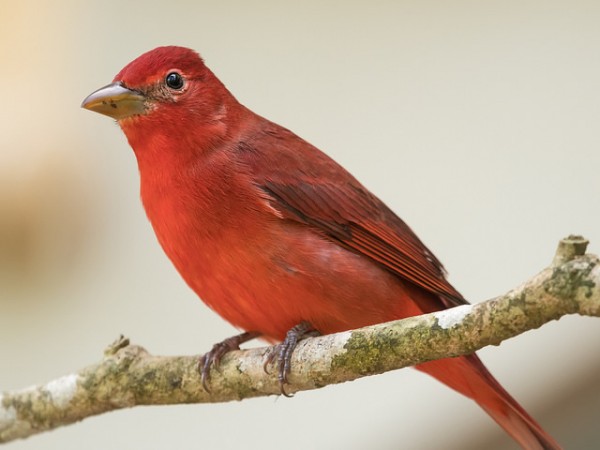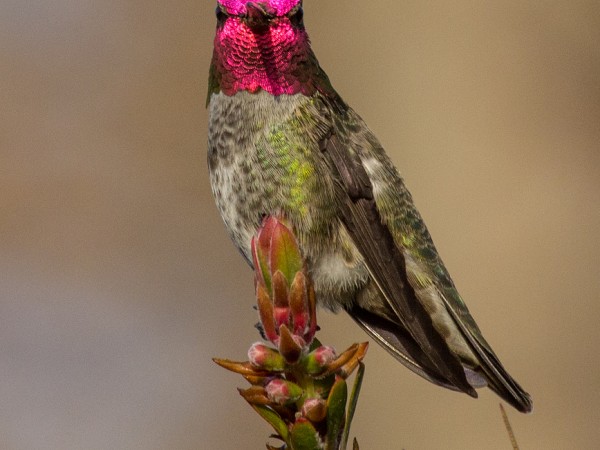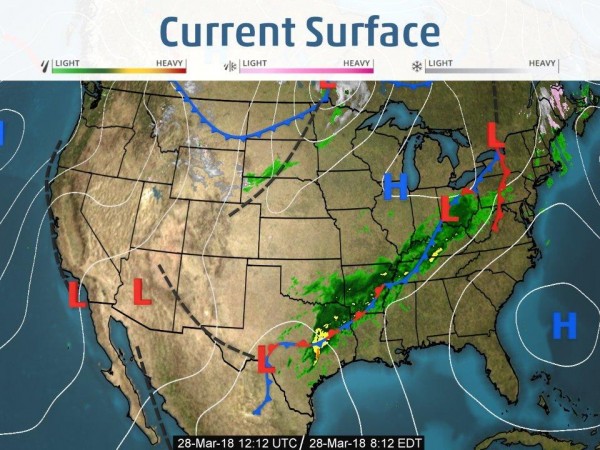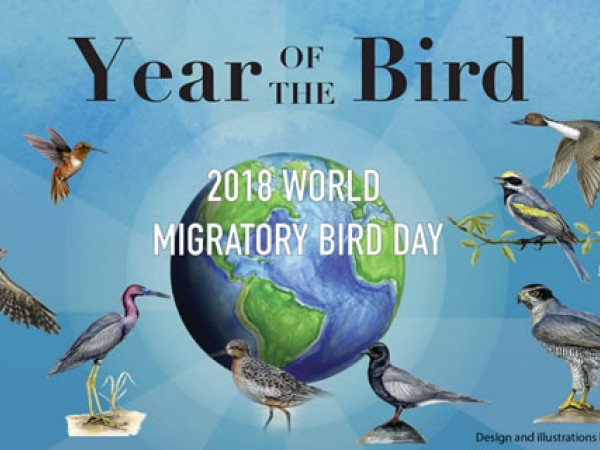New Arrivals Bring Welcome Sights and Sounds
More songbirds arrived in Gulf, southeastern, and western states, even though weather conditions weren't the best.
Weather and Songbird Migration News: March 28, 2018
Dear Journey North,
This week brought several new migrating songbirds, and they were very welcome sights (and sounds) since weather conditions were not so good.
New Arrivals Despite the Weather
A few Summer Tanagers and Gray Catbirds were seen in Louisiana this week, and there were a couple of sightings of Rose-breasted Grosbeak, Eastern Kingbird, and Baltimore Oriole in Georgia. Here in Tennessee, I heard my first Black-throated Green Warbler of the spring, which was a welcome sound! Due to the weather, there were not as many new arrivals, and numbers were small. As I mentioned last week, there were storm systems on both sides of the country that were predicted to limit migration, and that is just what happened.
New Songbirds in the West, and Others Push North
Out west, numbers were small and things weren’t much better, but southerly winds over the weekend helped push a few migrants pretty far north. Birders in Colorado recorded the first House Wren of the spring, a few Lucy’s Warblers showed up in Nevada, and Purple Martins, Anna’s Hummingbirds, and Violet-green Swallows made it all the way to Washington.
Will Weather Improve for Migration?
Is this week going to be another slow one? If we look at the weather map you will see a front across the Ohio and Mississippi River Valleys, bringing lots of rain. This is a very slow moving front, so there won’t be much migration in the middle of the country for a few days. Ahead of that front, winds are from the south (look at where the high pressure area is; remember that winds are north to the right of the high and south on the left side), so migrants might be able to make some progress north before the rain arrives at the end of the week. Out west, skies are clear, but winds are about to shift to the north (again, look at the high pressure area coming in from the Pacific). That means there won’t be much migration for a couple of days out there, either. Thus, it looks like it could be another slow week. Never fear! We are still early into spring migration, so there will be plenty to see and report in the coming weeks!
Year of the Bird -- Keeping a Life List
Do you have a life list? Many bird watchers do. What is a life list? Well, just as the name implies, it is a list of all the birds you have seen in your life. There are certain rules for recording species for your life list, such as the birds have to be wild; you cannot count birds you see in a zoo. Hearing a bird is acceptable; you don’t have to actually see it, which is good because some species, like rails, are very difficult to see! Some people keep multiple lists, like state lists (all the birds they have seen in a particular state) or year lists (all the birds they see in a given year). Some people even keep lists of birds they see and hear in movies!
The person with the biggest life list is Tom Gullick, a British bird watcher who recorded his 9,000th bird in 2012 (there are 10,000 bird species total); it was a Wallace’s Fruit-dove in Indonesia. He was 81 years old when he saw it, and when he reached that milestone, he decided it was time to hang up his binoculars and retire from bird watching. My life list is currently 720, so I have a long way to go! With the great variety of species that can be found at this time of year, spring migration might be a good time for you to start your own life list!
Take care,
David Aborn, Ornithologist
North Chickamauga Creek Conservancy
Chattanooga, TN

